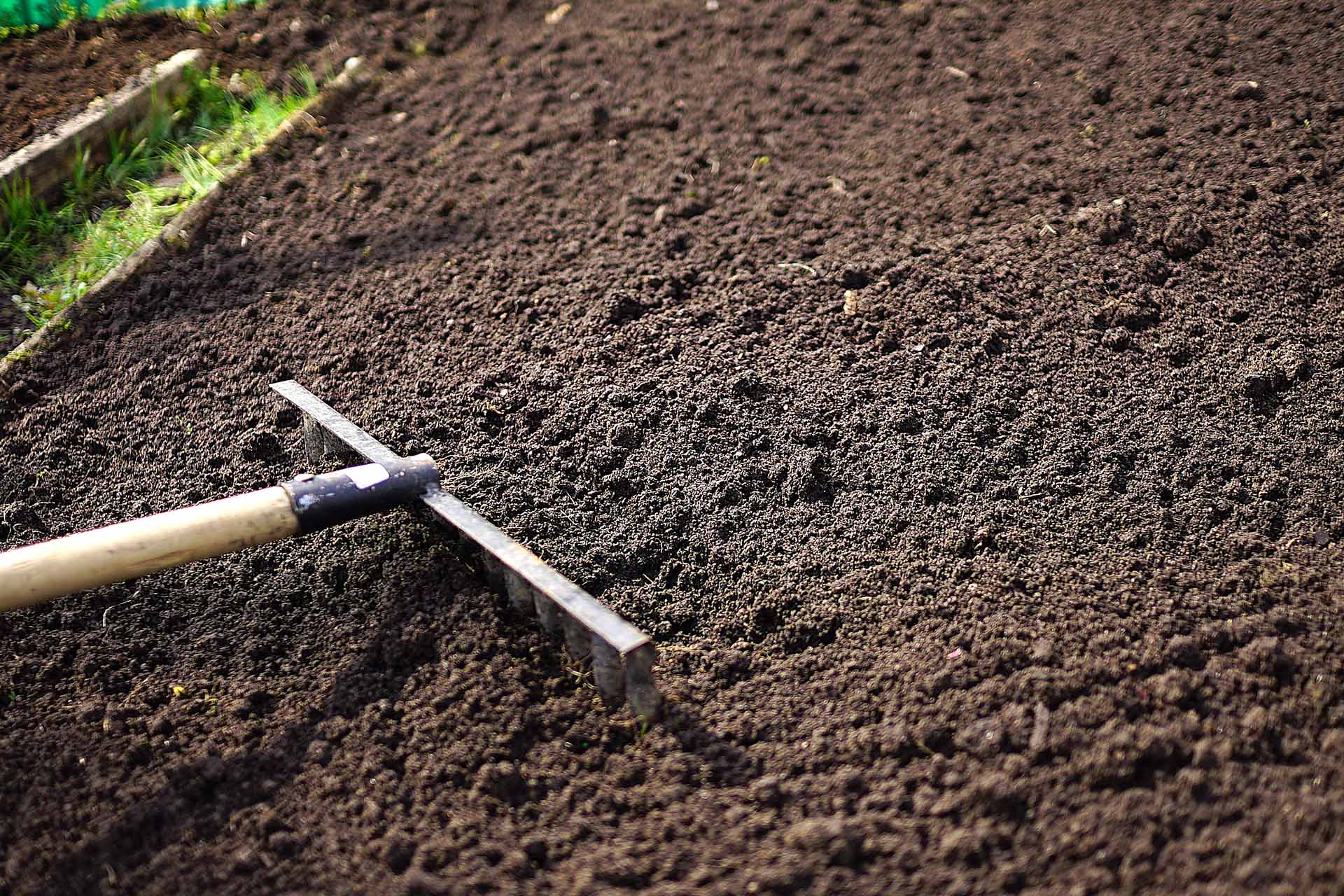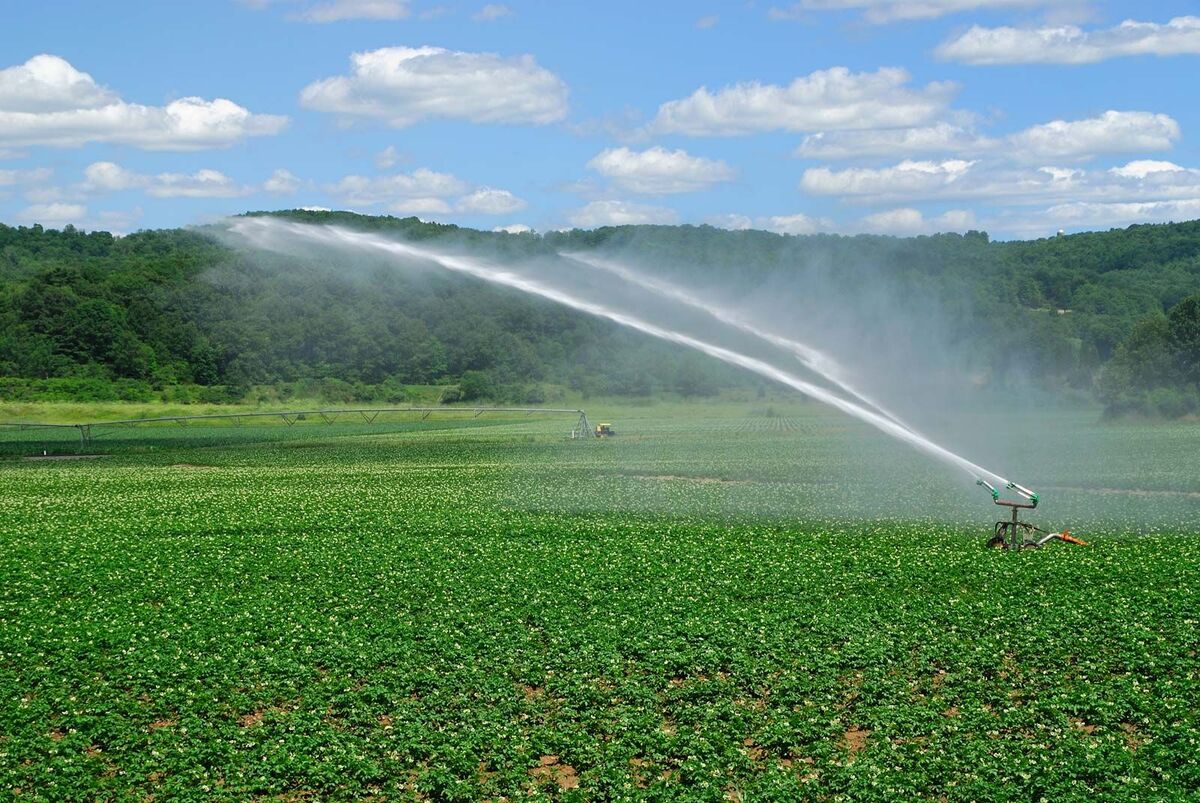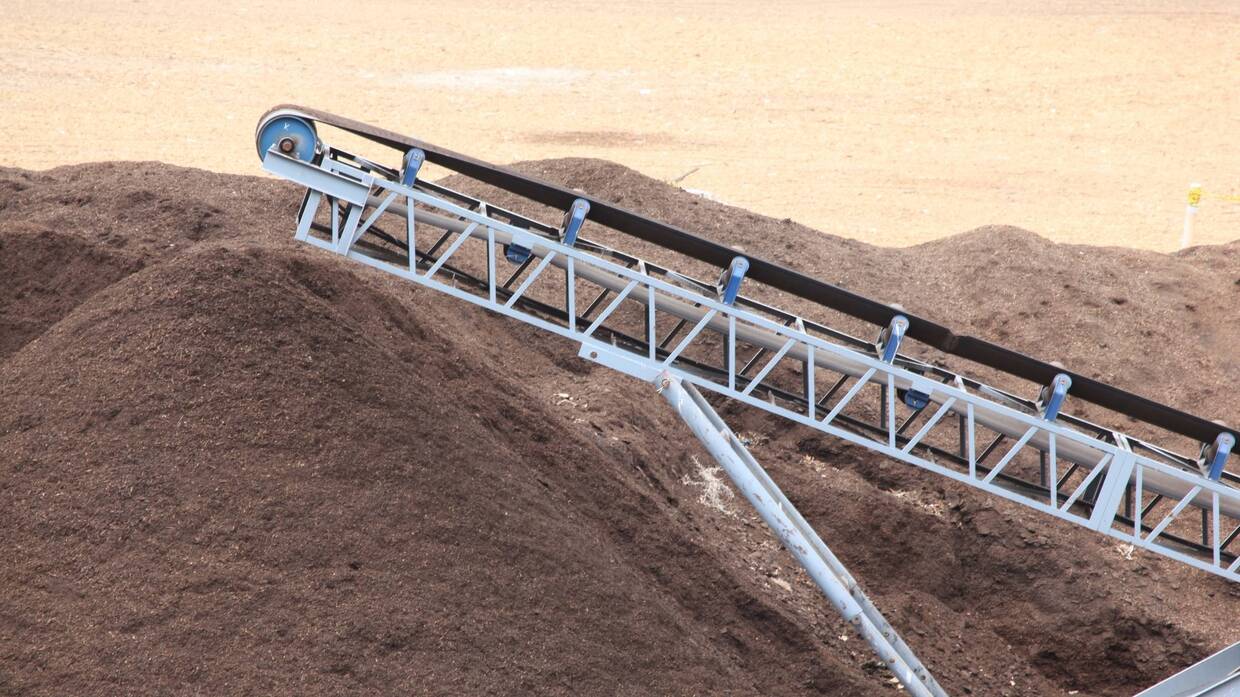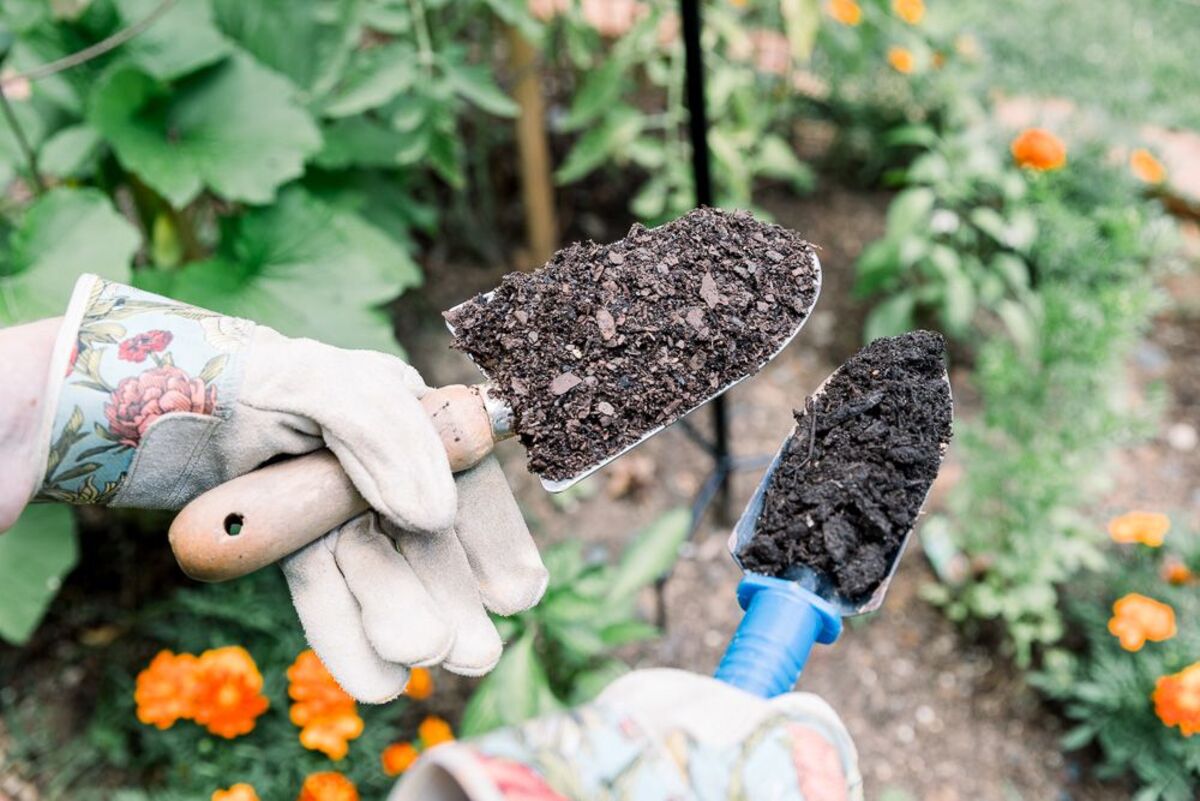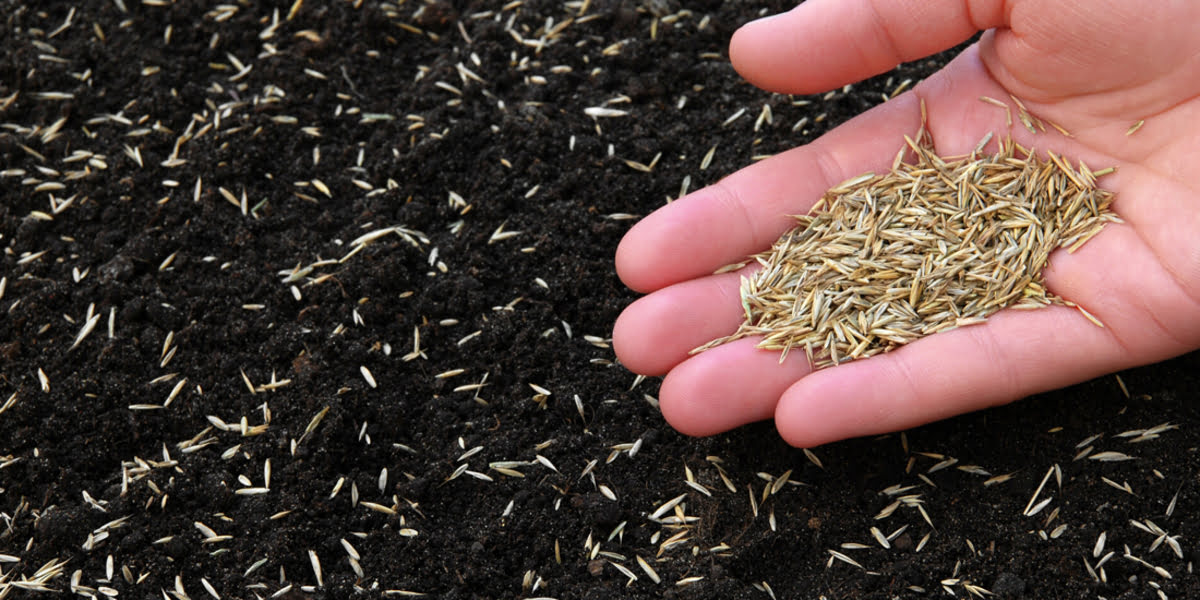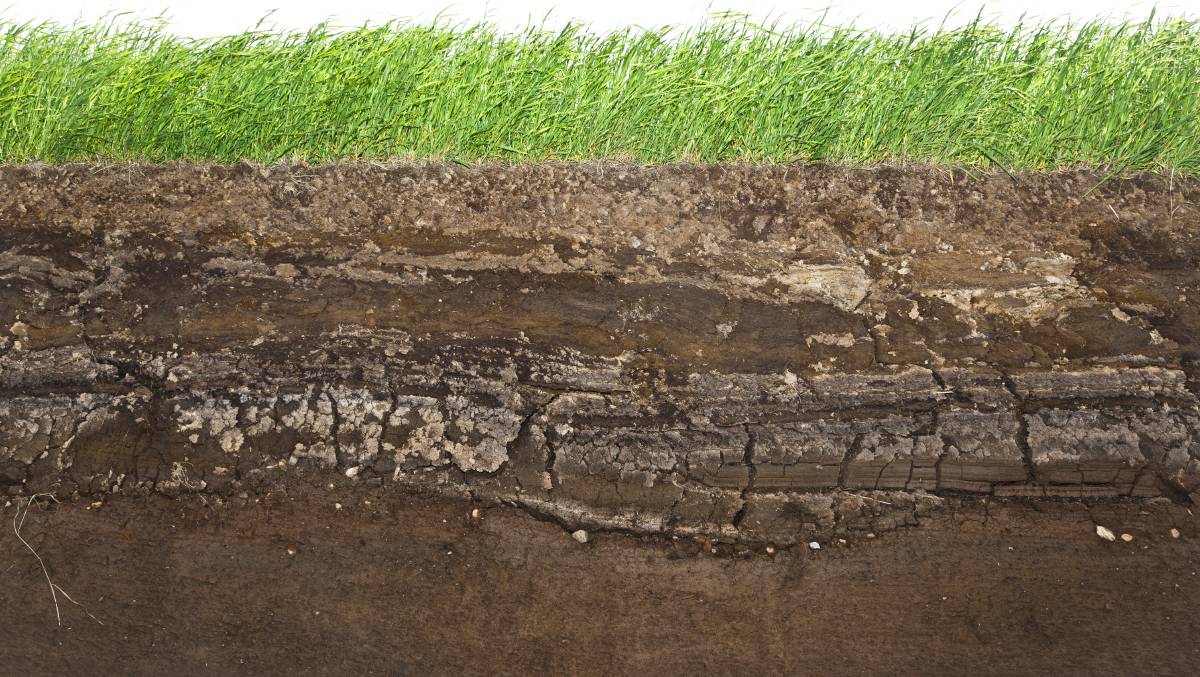Home>Gardening Basics>Understanding Soil>Why Is Topsoil Crucial For Agriculture


Understanding Soil
Why Is Topsoil Crucial For Agriculture
Published: November 22, 2023
Understanding soil and its importance in agriculture, particularly topsoil, is crucial for achieving successful crop growth and productivity. Discover why topsoil is vital for sustainable farming practices.
(Many of the links in this article redirect to a specific reviewed product. Your purchase of these products through affiliate links helps to generate commission for Chicagolandgardening.com, at no extra cost. Learn more)
Table of Contents
Introduction
Welcome to the world beneath our feet, where a complex and vital ecosystem thrives – the soil. In order to understand the importance of topsoil for agriculture, we must first grasp the fundamental concept of soil and its components.
Soil is a mixture of organic matter, minerals, air, and water that provides the nourishment necessary for plant growth. Among the various layers of soil, topsoil holds a special place. It is the uppermost layer of soil, typically ranging from 2 to 8 inches thick, and it is where the majority of plant roots grow and extract nutrients.
Topsoil is truly the lifeblood of agriculture. It is the foundation on which our crops thrive and the key to sustainable and bountiful harvests. In this article, we will delve into the significance of topsoil in agriculture, exploring its nutrient content, its role in water absorption, the impact of erosion, and the importance of its conservation and management.
A proper understanding of topsoil is crucial for farmers, gardeners, and anyone interested in sustainable food production. So, let’s dig in and discover the secrets that lie beneath our feet!
Definition of Topsoil
Topsoil, as mentioned earlier, is the uppermost layer of soil found in agricultural fields and gardens. It is commonly referred to as the “A horizon” and is characterized by its rich organic matter, high nutrient content, and ability to support plant growth. Topsoil is formed over many years through the decomposition of plant and animal matter, weathering of rocks, and the activity of organisms such as earthworms and bacteria.
Topsoil is often darker in color due to the presence of organic matter, which gives it a crumbly texture. This texture allows for better aeration and water retention compared to lower soil layers. The depth of topsoil can vary depending on the location and environmental conditions, but generally, it ranges from a few inches to about a foot or more.
Topsoil acts as a reservoir for essential nutrients such as nitrogen, phosphorus, potassium, and micronutrients like iron, zinc, and manganese. Its ability to retain and release these nutrients is crucial for providing plants with the necessary elements for growth and development. Furthermore, topsoil serves as a habitat for a diverse array of microorganisms, including bacteria, fungi, and earthworms, which play a vital role in nutrient cycling and soil health.
Agricultural practices that focus on nurturing and preserving topsoil are essential for maintaining the long-term sustainability of our food production systems. Understanding the unique characteristics and functions of topsoil is key to implementing strategies that promote soil fertility and productivity.
Now that we have a basic understanding of topsoil, let’s explore why it is so important for agriculture and how it contributes to successful crop production.
Importance of Topsoil in Agriculture
Topsoil plays a vital role in agriculture and is essential for the success of crop production. Here are a few key reasons why topsoil is of utmost importance:
- Nutrient Content: Topsoil is rich in organic matter and vital nutrients necessary for plant growth. It serves as a reservoir for essential elements like nitrogen, phosphorus, and potassium, which are crucial for plant development and yield. The nutrient content of topsoil ensures that crops have access to the required nutrients throughout their growth cycle.
- Root Zone: The topsoil layer is where the majority of plant roots are concentrated. It provides a hospitable environment for root development, allowing plants to anchor securely in the soil while extracting water and nutrients. The presence of organic matter in topsoil improves soil structure, promoting root penetration and creating a favorable environment for root proliferation.
- Water Retention: Topsoil has a higher capacity for water retention compared to underlying soil layers. Its crumbly texture, created by organic matter, allows for better water infiltration and storage. This ensures that crops have a steady supply of moisture, reducing their dependence on frequent irrigation and helping them withstand periods of drought.
- Microbial Activity: Topsoil is teeming with a diverse community of beneficial microorganisms, including bacteria, fungi, and earthworms. These microorganisms have symbiotic relationships with plants and contribute to the overall health of the soil. They aid in nutrient cycling, promote soil structure, and suppress harmful pathogens, ultimately enhancing crop productivity.
- Soil Fertility: The fertility of topsoil is crucial for the successful growth of crops. It provides the ideal conditions for the development of strong, healthy plants with high yield potential. Maintaining the fertility of topsoil through organic matter additions, crop rotation, and sustainable farming practices is essential to ensure long-term agricultural productivity.
Without topsoil, agriculture as we know it would not be possible. It is the foundation on which we cultivate crops and ensure food security for our growing population. Understanding the importance of topsoil is key to implementing sustainable farming practices that preserve and maximize its benefits for future generations.
Nutrient Content of Topsoil
Topsoil is a treasure trove of nutrients that are essential for plant growth and development. It serves as a reservoir for crucial elements that plants require throughout their lifecycle. Let’s take a closer look at the nutrient content of topsoil:
Nitrogen (N): Nitrogen is a vital nutrient for plants, responsible for promoting leafy growth and overall plant vigor. Topsoil contains organic matter that decomposes over time, releasing nitrogen into the soil. Additionally, nitrogen-fixing bacteria present in the topsoil convert atmospheric nitrogen into forms that plants can utilize, further enriching the nutrient content.
Phosphorus (P): Phosphorus is involved in various processes within plants, including energy transfer, root development, and flowering. Topsoil accumulates phosphorus from organic matter, previous plant residues, and weathering of rocks. Adequate levels of available phosphorus in the topsoil are crucial for optimal plant growth and production.
Potassium (K): Potassium is essential for plant metabolism, stress tolerance, and the movement of water and nutrients within the plant. Topsoil serves as a reservoir for potassium, with its nutrient content primarily derived from weathering of minerals in the soil. Adequate levels of potassium in topsoil are essential for crop quality, disease resistance, and overall plant health.
Micronutrients: In addition to the major nutrients mentioned above, topsoil also contains essential micronutrients such as iron, zinc, copper, manganese, and boron. Although required in smaller quantities, these micronutrients are critical for various plant functions, including enzyme activity, chlorophyll production, and nutrient uptake.
The nutrient content of topsoil can vary based on factors such as climate, soil composition, and agricultural practices. Regular soil testing allows farmers to assess the nutrient levels in their topsoil, enabling them to provide appropriate fertilization to meet their crops’ nutritional needs.
It’s important to note that maintaining a balanced nutrient profile in topsoil is crucial for sustainable agriculture. Over-reliance on synthetic fertilizers without consideration for organic matter additions and soil microbial activity can lead to nutrient imbalances, environmental degradation, and decreased soil fertility. Implementing nutrient management practices that focus on organic amendments, crop rotation, and cover cropping can help enhance and maintain the nutrient content of topsoil.
The nutrient richness of topsoil, coupled with proper management practices, ensures that crops have access to the necessary elements for growth, ultimately leading to improved yield, quality, and resilience in agricultural systems.
Role of Topsoil in Water Absorption
Topsoil plays a crucial role in the absorption and retention of water, making it a vital component for plant growth and survival. Let’s explore the various ways in which topsoil contributes to water management:
Water Infiltration: Topsoil has a crumbly texture enriched with organic matter, which creates pore spaces and improves soil structure. This aids in the infiltration of water into the soil, allowing it to penetrate deeper and reach the plant’s root zone. The presence of organic matter enhances the soil’s ability to hold onto moisture, making it available to plants for an extended period.
Water Storage: Topsoil acts as a reservoir, capable of storing a significant amount of water. The organic matter content in topsoil helps to retain water molecules and prevents excessive evaporation. This stored water in the topsoil is slowly released to plant roots, ensuring a steady water supply, especially during dry periods.
Reduced Runoff: The crumbly structure of topsoil allows it to absorb water effectively, reducing the amount of surface runoff. When rainfall occurs, the topsoil acts as a sponge, soaking up the water and minimizing erosion caused by runoff. This is especially crucial in fields or gardens with slope gradients where preventing erosion is vital for soil conservation and maintaining soil fertility.
Prevention of Soil Erosion: Topsoil plays a crucial role in preventing soil erosion by absorbing the impact of rainfall and reducing surface runoff. Erosion can strip away the topmost layer of soil, which is rich in organic matter and nutrients. By preserving topsoil and its water-absorbing capacity, the risk of erosion is minimized, ensuring the long-term productivity and fertility of agricultural land.
Enhanced Root Growth: The availability of water in the topsoil layer encourages root growth and development. The presence of water in the topsoil ensures that plants have a sufficient water supply in close proximity to their roots, allowing them to absorb water and nutrients more efficiently. This, in turn, supports optimal plant growth and overall crop productivity.
Proper management of topsoil and organic matter additions can help improve its water-absorbing capacity. Techniques such as mulching, cover cropping, and conservation tillage can aid in maintaining an optimal soil structure and promoting water infiltration and retention.
In regions prone to drought or with limited water availability, maximizing the water-absorbing capacity of topsoil becomes even more critical. The ability of topsoil to effectively absorb and retain water reduces the reliance on irrigation, promotes efficient water use, and contributes to the overall sustainability of agricultural practices.
Topsoil Erosion and Its Impacts on Agriculture
Topsoil erosion is a significant challenge that agricultural systems face worldwide. It occurs when topsoil is removed or displaced by the forces of wind, water, or human activities. The impacts of topsoil erosion on agriculture are far-reaching and can have severe consequences. Here’s an overview of the impacts of topsoil erosion:
Loss of Fertile Soil: Topsoil is the most fertile layer of soil, enriched with organic matter and essential nutrients. When erosion occurs, the topsoil is lost or displaced, resulting in the reduced fertility of the land. Without the nutrient-rich topsoil, crops suffer from inadequate access to nutrients, leading to diminished yield and lower agricultural productivity.
Reduced Water Infiltration: Erosion removes the top layer of soil that has a crumbly structure, which promotes water infiltration and retention. Without this layer, water cannot penetrate the soil effectively, leading to increased runoff and decreased water availability for plant roots. The reduced water infiltration due to erosion exacerbates the impact of droughts and can result in water stress for crops.
Increased Soil Compaction: In areas where topsoil erosion occurs, the underlying soil layers may become compacted. Compacted soil hinders root penetration and limits the ability of plants to access water and nutrients. This can significantly impair plant growth and development, ultimately affecting crop productivity.
Loss of Organic Matter: Topsoil erosion often leads to the loss of organic matter, which is vital for soil fertility and structure. Organic matter improves soil moisture retention, promotes nutrient availability, and supports beneficial microbial activity. The loss of organic matter due to erosion can result in long-term degradation of soil health and reduce its ability to support productive agriculture.
Increased Environmental Pollution: Eroded topsoil, along with the contaminants it carries, can infiltrate water bodies, leading to water pollution. Sediment runoff can clog streams, rivers, and reservoirs, impairing aquatic ecosystems and the quality of drinking water sources. The environmental impacts of topsoil erosion extend beyond agricultural lands and can have wide-reaching consequences for aquatic biodiversity and human health.
It’s crucial to address topsoil erosion through effective soil conservation measures. Implementing techniques such as contour plowing, terracing, and cover cropping can help mitigate erosion and preserve topsoil integrity. Additionally, adopting sustainable farming practices like reduced tillage and crop rotation can enhance soil health, reduce erosion rates, and promote long-term agricultural sustainability.
By recognizing the impacts of topsoil erosion on agriculture and taking proactive steps to prevent and mitigate erosion, we can safeguard our soil resources and ensure the productivity and resilience of our agricultural systems for future generations.
Conservation and Management of Topsoil
Conserving and effectively managing topsoil is crucial for maintaining soil fertility, preserving agricultural productivity, and ensuring sustainable food production. Here are some key strategies and practices for the conservation and management of topsoil:
- Soil Erosion Control: Implement erosion control measures to prevent the loss of topsoil. Techniques such as contour plowing, terracing, and strip cropping help slow down water runoff and minimize soil erosion. These practices create barriers or patterns that reduce the impact of rainfall, allowing water to infiltrate the soil more effectively and reducing the force of runoff.
- Cover Cropping: Planting cover crops, such as legumes or grasses, helps protect the topsoil from erosion and preserves its organic matter content. Cover crops act as a living mulch, preventing rainwater from directly hitting the soil surface and reducing compaction caused by heavy rainfall. They also enhance soil structure, improve nutrient availability, and promote beneficial soil microbial activity.
- Conservation Tillage: Adopt conservation tillage practices that minimize soil disturbance. Reduced tillage, such as no-till or minimum tillage, leaves crop residues on the soil surface, acting as a protective layer against erosion. Conservation tillage practices help maintain soil structure, preserve organic matter, and retain moisture in the topsoil, promoting healthier and more resilient agricultural systems.
- Organic Matter Management: Increase the organic matter content in topsoil through organic matter additions such as compost, manure, and crop residues. Organic matter improves soil structure, enhances water-holding capacity, promotes nutrient retention, and supports beneficial soil microbial activity. Regular additions of organic matter help replenish nutrients and promote long-term soil fertility.
- Crop Rotation and Diversification: Implement crop rotation and diversify the plant species grown in agricultural fields. Crop rotation helps break pest and disease cycles, reduces nutrient depletion, and promotes a balanced nutrient profile in the soil. By rotating crops, different plants with varying root structures and nutrient requirements can interact with the topsoil, improving its health and productivity.
- Water Management: Implement effective water management techniques to optimize water use and reduce the risk of erosion. Practices such as drip irrigation, precision sprinkler systems, and soil moisture monitoring can minimize water runoff, prevent water stress, and promote efficient water use. Proper watering schedules and techniques ensure that plants receive the necessary moisture without waterlogging or leaching nutrients from the topsoil.
- Implement Buffer Strips: Establish buffer strips or vegetation buffers along water bodies and field edges to trap sediment and filter runoff. These strips act as a barrier, preventing sediments and pollutants from entering water bodies and protecting the quality of surrounding ecosystems. Buffer strips help reduce erosion, improve water quality, and preserve the integrity of topsoil in agricultural areas.
By implementing these conservation and management practices, farmers and landowners can safeguard topsoil integrity, promote soil health, and ensure the long-term productivity and sustainability of agricultural lands. Adopting sustainable farming practices that prioritize the conservation of topsoil will not only benefit the environment but also contribute to resilient agricultural systems and a secure food supply.
Conclusion
The significance of topsoil in agriculture cannot be overstated. As the uppermost layer of soil, topsoil plays a vital role in providing the necessary nutrients, supporting root growth, facilitating water absorption, and sustaining crop productivity. It is the foundation upon which successful agriculture depends.
Understanding the composition and functions of topsoil allows us to implement effective strategies for its conservation and management. Through erosion control measures, organic matter management, cover cropping, and water management techniques, we can protect this precious resource from degradation and ensure its long-term fertility.
Preserving topsoil is not only crucial for the productivity and sustainability of agricultural systems, but it also has broader implications for environmental health, water conservation, and food security. By adopting sustainable farming practices that prioritize topsoil conservation, we can mitigate the impacts of erosion, enhance soil fertility, promote biodiversity, and mitigate climate change effects.
It is the responsibility of farmers, landowners, policymakers, and society as a whole to prioritize the preservation and sustainable management of topsoil. By recognizing the importance of topsoil in agriculture and taking proactive measures to protect it, we can ensure the health and productivity of our soils, maintain the resilience of agricultural systems, and secure a sustainable future for generations to come.
